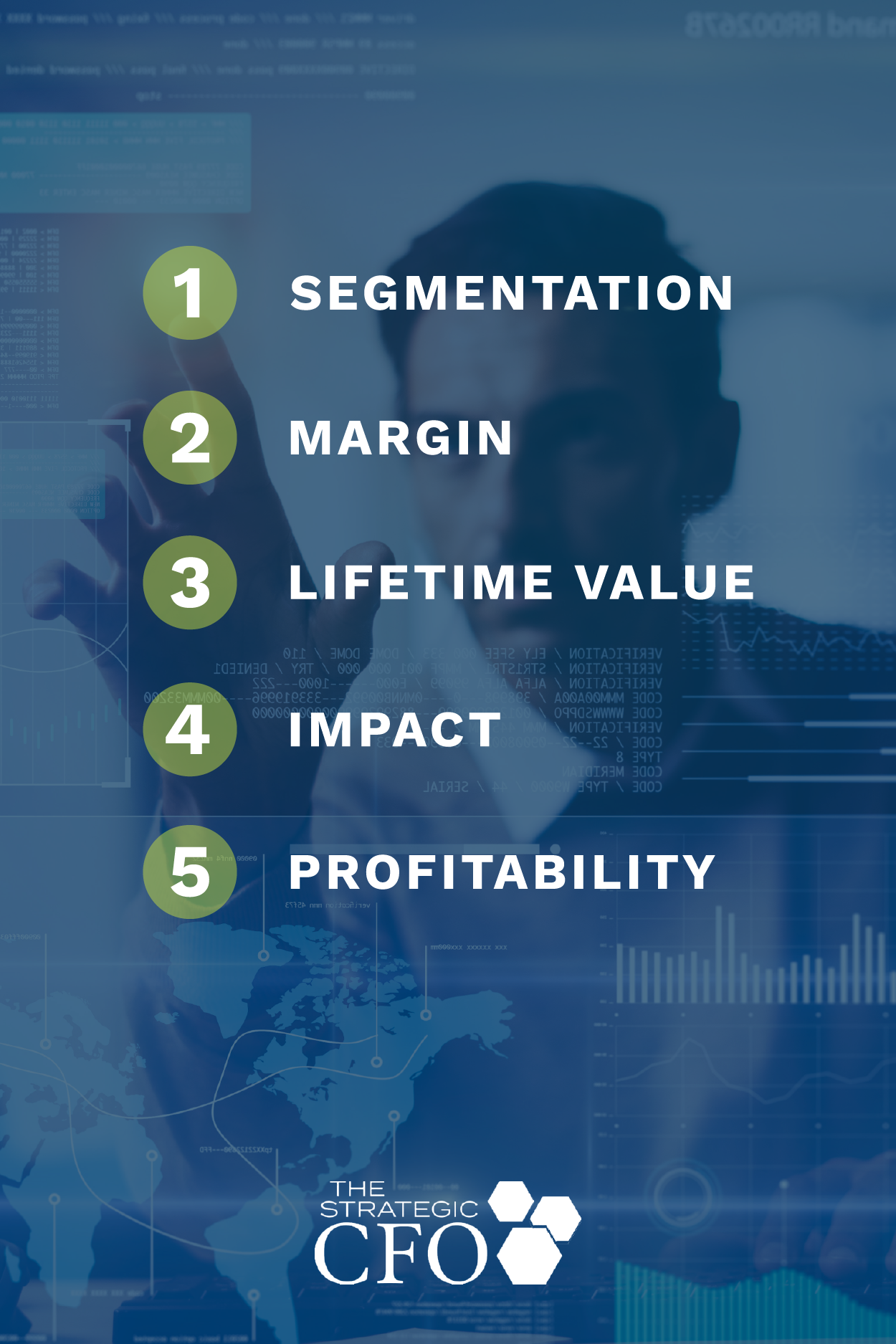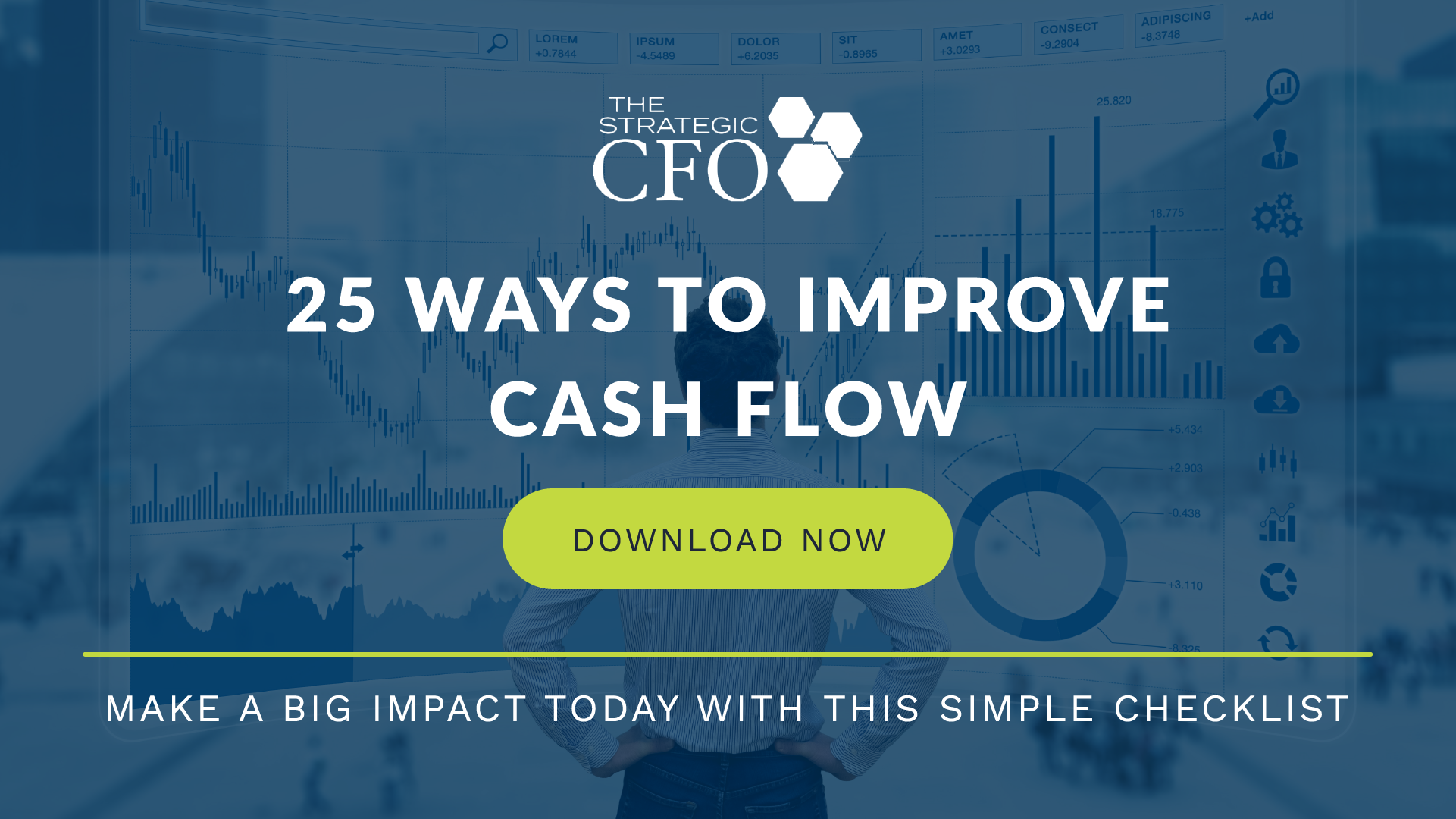Have you ever come across that one customer who you would do anything to get rid of? Have you ever questioned what to do with the customer that causes more strife than good? Whether they’re a drain or merely a pain, these customers cost you money. So what do you do with unprofitable customers?
Business is a two-way street. Customers should be as beneficial to you as you are to them. Over time, customers who are not as profitable wiggle their way into your business. How do we find out which customers are profitable and which are not?
Evaluating your customers and how they impact your profitability is just one of the many ways to improve cash flow. Download the free 25 Ways to Improve Cash Flow whitepaper to learn 24 other methods.
Defining Your Profitable Customers
Let’s take a look at your numbers. Does your sales volume reflect the number of customers you spend your time with? More specifically, what are your ratios for the number of transactions and average sale per transaction? If your ratio is pretty high, and your margins are low, that’s a warning sign that it’s time to weed the garden.
Customer Profitability & Cash Flow
Profitable customers have a huge impact on a company’s cash flow. Maintaining customer profitability means managing your costs (and thus cash flow) associated with that particular customer. The first step is to manage customer segmentation. Allocate fewer or less expensive resources to those customers that are known for taking advantage of you.
The first step is to manage customer segmentation. Allocate fewer or less expensive resources to those customers that are known for taking advantage of you.
The second step is to measure each customer’s margin. This will allow you to compare each customer and see where you should be spending your time.
The third step is to measure the lifetime value of a customer. This is a KPI that we use and find valuable as a metric for conversion rates.
The fourth step is to manage customer impact. What would your business look like if you sent this customer packing?
The last and most important step is measure customer profitability.
Customer Profitability Analysis
First, you have to segment your total customers based on your servicing characteristics. This looks at the number of transactions and the sales volume. You can then calculate the profitability of a customer by subtracting your estimated relative cost to service from the revenue for the various segments.
Conduct your customer profitability analysis to start eliminating customers that are costing you money, focusing on those customers that are profitable, and increase productivity in your organization.
But putting the math aside, you should probably look back on the patterns and relationships with those customers… Are your customers rude and putting off certain payments? Are they a pain to deal with? Do they expect special treatment for a bargain price?
Firing Your Customers
Once you determine who your unprofitable customers are, you need to fire them. I know what you’re thinking… “How do I fire someone that brings me money?!” But that’s the problem. They are consuming resources you could dedicate to profitable customers, so they are actually costing you money.
Firing those unprofitable customers opens up opportunities for your more profitable customers. You can spend more time, money, and effort on the people worth focusing on.
Last-Minute Lisa
Let’s say a customer calls you on Friday afternoon and needs an order rushed out by the end of the day. This customer also consumes extra resources because you have to pull extra workers to complete the order quickly. Unless you charge a premium price for rush orders, this customer is less profitable because they consume more resources. Not sure who these customers are? Talk to your operations people. They know.
Slow-Mo Joe
Another customer is always slow to pay their invoices. In order to collect, your A/R clerk has to make multiple calls and re-send invoices because they “lost” them. Because they consume more resources than customers who pay regularly, they are less profitable than other customers. In addition, they constrain your cash because they are slow to pay.
Tiny Tim
Tiny Tim is the customer that only orders in small batches. Your manufacturing process requires set up time for each order, so small batch orders are less profitable than large orders due to the cost of setting up the machinery for the order. If you don’t have premium pricing for small orders or include set up time for each order, you don’t make as much money on smaller orders as you do for large orders.
Last-minute orders, delayed collections, and small batches can seem insignificant in isolation, but if a customer continually takes advantage of you, those costs can add up quickly.
Benefits of Weeding the Garden
Increase Productivity
If you continually weed your garden, it allows you to take bite-size pieces in cleaning up. This improves productivity immensely. Use the metrics/steps mentioned above to measure customer profitability and act in real time.
Nourish Profitable Customers
Identify profitable customers. Funnel more resources into those customers that are profitable. Just like soil needs nutrients, your good customers need resources. Avoid nourishing unprofitable customers.
Build a Better Garden
Weeds (unprofitable customers) tend to choke out healthy plants. Build a healthy garden by removing those weeds and unhealthy elements that restrict the growth of your company.
For other ways to improve cash flow, download the 25 Ways to Improve Cash Flow whitepaper to start identifying how profitable customers impact your company.
Strategic CFO Lab Member Extra
Access your Strategic Pricing Model Execution Plan in SCFO Lab. The step-by-step plan to set your prices to maximize profits.
Connect with us on Facebook. Follow us on Twitter. Become a Strategic CFO insider.












